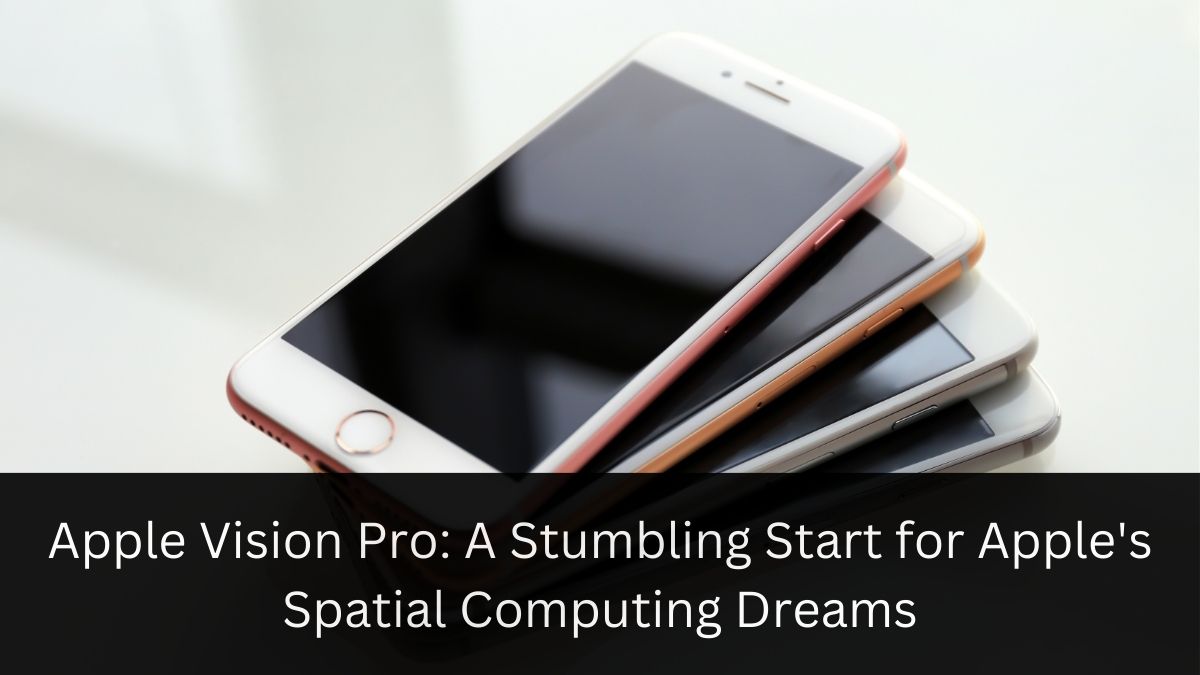Press Release
Apple Vision Pro: A Stumbling Start for Apple’s Spatial Computing Dreams

In the ever-evolving landscape of technology, Apple has long been a trailblazer. However, its latest venture into spatial computing with the Apple Vision Pro seems to be facing an uphill battle. As market analysts paint a gloomy picture of the device’s sales, it’s worth examining the challenges and potential future of this ambitious product.
The Vision Pro’s Rocky Road
A Slow Start in Sales
When Apple unveiled the Vision Pro, tech enthusiasts and Apple devotees alike were intrigued by the promise of a new era in computing. Priced at a hefty $3,500, the device was never expected to fly off the shelves like iPhones. However, recent reports suggest that sales have been even slower than anticipated.
According to market research firm IDC, the Apple Vision Pro has yet to reach the 100,000 unit sales mark. This figure falls short of even the most conservative estimates, raising questions about the device’s long-term viability.
The International Lifeline
In a bid to boost sales, Apple recently launched the Vision Pro in several international markets, including Europe, the UK, China, Japan, and Singapore. Analysts expect these new markets to provide a temporary lift to sales figures, potentially keeping the product afloat until next year.
As someone who’s followed Apple’s product launches for years, I can’t help but draw parallels to the original Apple Watch launch. Initially met with skepticism, the watch eventually found its footing. Could the Vision Pro follow a similar trajectory?
Understanding the Challenges
The Price Tag Conundrum
Let’s face it – $3,500 is a significant investment for most consumers. As an avid tech enthusiast, even I had to think twice about the cost. The Vision Pro’s price point puts it squarely in the realm of professional equipment rather than a consumer gadget.
Confusion and Complexity
Another hurdle for potential buyers is the device’s complexity. Many early adopters reported feeling confused about the setup process and unsure how to integrate the Vision Pro into their daily lives. This uncertainty can be a major deterrent for those on the fence about making such a substantial purchase.
Limited Use Cases
While Apple has touted the Vision Pro as a “spatial computer,” many consumers are still struggling to see how it fits into their workflow or lifestyle. As someone who’s experimented with various AR and VR devices, I can attest that finding practical, everyday uses for such technology can be challenging.
The Road Ahead
A More Affordable Future?
Rumors are swirling about Apple’s plans for a less expensive Vision device, potentially slated for release in late 2025. This “budget” model could address some of the current version’s shortcomings:
- A lower price point (though still likely to be around $1,750)
- Removal of the exterior display to reduce costs
- Possible tethering to iPhones or Macs for processing power
While these changes could make the device more accessible, they also raise questions about performance and functionality trade-offs.
Software Updates and Ecosystem Integration
Apple is known for its robust ecosystem, and the Vision Pro is no exception. The company is working on a visionOS update that promises to improve several key features:
- Enhanced faux-3D spatial photos
- New gesture controls
- Panoramic Mac screen mirroring
These updates could potentially address some user concerns and provide more compelling reasons to adopt the technology.
The Bigger Picture: Apple’s Spatial Computing Gamble
A Long-Term Vision
It’s important to remember that Apple often plays the long game with new technology. The first iPhone, revolutionary as it was, had its limitations. The same could be said for the Apple Watch and even the iPad.
Apple’s investment in spatial computing suggests they see it as the next frontier in personal technology. The Vision Pro may be just the first step in a longer journey towards more immersive and intuitive computing experiences.
Competition and Market Pressures
The Vision Pro doesn’t exist in a vacuum. Devices like the Meta Quest 3, priced at a more palatable $500, offer compelling alternatives. Apple will need to clearly articulate the value proposition of its higher-priced offering to justify the “Apple tax” in this new product category.
As we look at the current state of the Apple Vision Pro, it’s clear that the device faces significant challenges. Low sales figures, a high price point, and user confusion all point to a rocky start for Apple’s foray into spatial computing.
However, it would be premature to write off the Vision Pro entirely. Apple has a track record of refining and iterating on new technologies, often leading to widespread adoption in later generations. The rumored lower-cost model and ongoing software updates suggest that Apple remains committed to its vision of spatial computing.
For now, the Apple Vision Pro remains a niche product, appealing primarily to early adopters and professionals in specific fields. Whether it can evolve into a must-have device for the average consumer remains to be seen.
As we watch this story unfold, one thing is certain: the world of technology is never static. The Vision Pro, regardless of its current struggles, represents a bold step into new territory. Its ultimate success or failure will likely shape the future of how we interact with digital information and each other in the years to come.
What are your thoughts on the Apple Vision Pro? Have you had a chance to try one, or are you waiting for a more affordable version? Share your experiences and opinions in the comments below!
